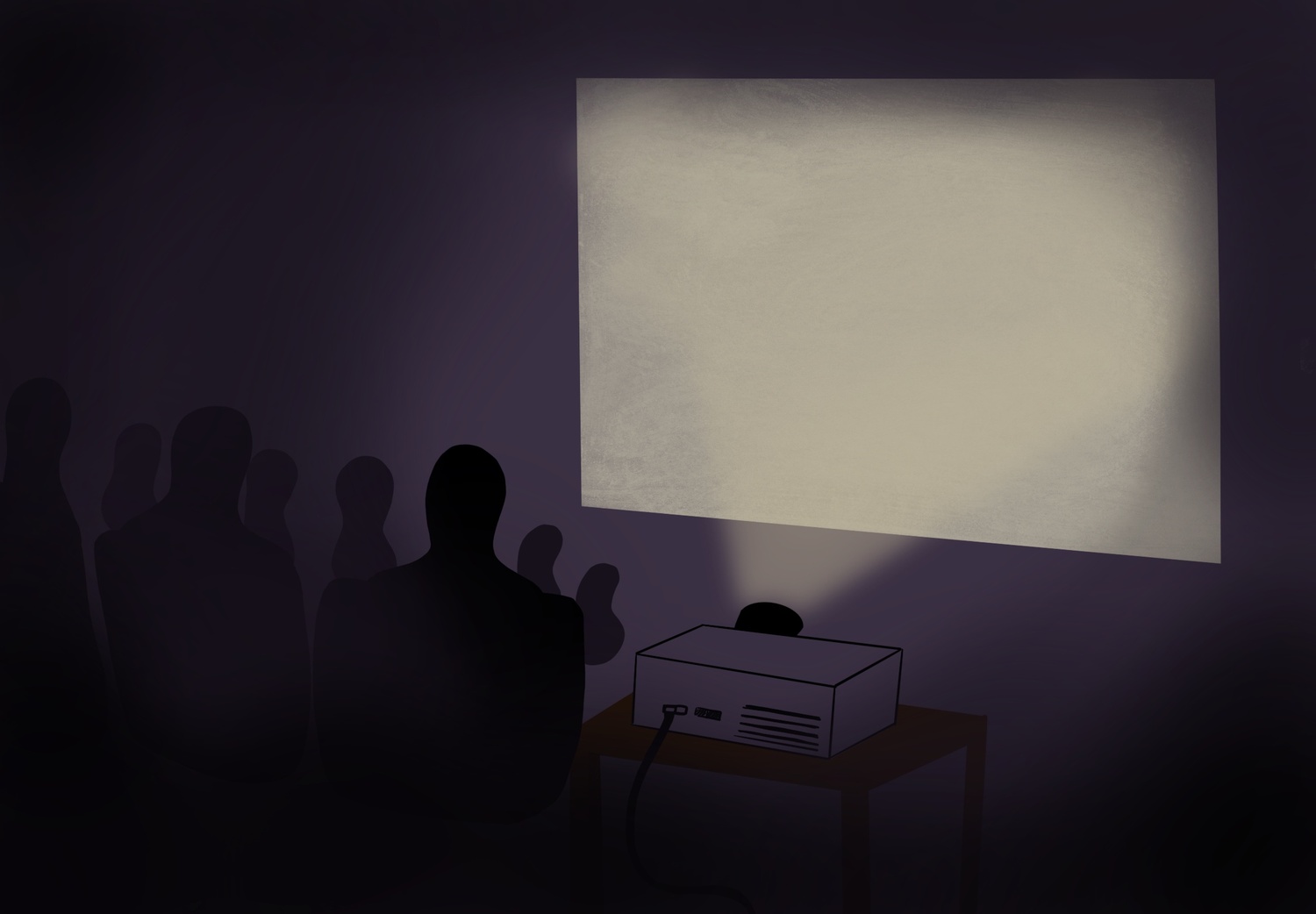
Who’s Got Queer Cinema?
Conversations surrounding gayness often search for some greater meaning encased within our identity. What makes a gay guy original? I’ve often thought about how adolescence may prescribe some restriction to queer originality. In high school, the possibility of queerness seemed out of reach. To challenge masculinity’s inherent attachment to heterosexuality, or to destabilize the natural order of prom or homecoming, was a surefire conduit to injury.
In college, I like to believe I’ve gotten my fingers on the pulse of authenticity. Though, I admit, I sometimes do not know what that should feel like. The stakes hold ineffable weight. Queerness is inherently personal; it varies by individual, by geography, by politics. Yet, even as we claim an originality by virtue of being gay, its depictions in the cinema of queerness seem eternally familiar, and perhaps make us slightly less authentic. Luca Guadagnino’s 2024 romantic drama “Queer” is a 1950s period film centered on William Lee, an American expatriate in Mexico City, and his seemingly obsessive connection to the American GI Eugene Allerton. In a proverbial tug of war, Lee pursues Allerton despite the fact that Allerton does not perceive himself as “queer.” He’ll tell Lee, “I’m not queer. I’m disembodied.”
What does it mean, then, to be disembodied? When the pathway towards authenticity becomes muddled with shame — what Michael Warner typifies as a sexual “politics of shame”— we perform a queerness that struggles to wield its own agency. Without “access to pleasures and possibilities” of sexual autonomy, queer individuals lack the opportunity to explore personal desires. While the well-intended optimist may offer “love is love” in 2025, that reality falters at the heterosexual expectations of school dances, of sports teams — of most things, really. “It’s X year” is a catchphrase for the liberal, coastal optimist who overlooks the ongoing fight to accept queerness. 1825 or 2025, sexuality-based reduction exists to quash queer becoming. In “Queer,” there’s something in Lee’s obsession with Allerton that codifies a script of discovery, of learning. Lee, an elder, attempts to decipher Allerton’s queerness. He attempts to beget queer reckoning.
I’ve witnessed permutations of this social phenomenon first-hand. For those around me in high school, queer reckoning materialized atop the bodies of older men. Because gayness could not manifest in our public or private spheres, sex became a promise of queer realization, an offering dangled tentatively between generations of queer folks. I remember staring at my text messages waiting for confirmation that a friend returned home. What I knew of that evening is that a car — white, maybe a Silverado — picked him up beneath a streetlight aside the banks of Philadelphia’s Schuylkill River. That night, he’d go speeding past his virginity. On couches, in beds, even in the backseat, queerness’s golden hour was dim- lit and secretive. I’m not sure this is universal. But it happens: gay sixteen-year-olds maturing with men twice and thrice their age.
And this semblance of personhood complicates “Queer.” These pockets of truth — that queer people forge relationships including significant age gaps, and that these can at times blur boundaries of authentic realization and personal security — coexist. “Queer” does not stand alone on the threshold of illuminating age as a determinant of queerness. Cinematically gorgeous, it exists in the same domain as the queer-cult classic that is “Call Me By Your Name.” In the latter, also directed by Guadagnino, a young, seventeen-year-old Elio entwines in a relationship with Oliver, an American exchange student in his mid-twenties who joins Elio and his family in Italy. The film is intensely sexual, and the cinematic beauty is so awe-inspiring that we forget Elio is seventeen. That’s reality, too: a gay child has an ardent crush on an older man.
I wrestle with these age gaps. There’s some unspeakable beauty — the existence of gay relationships, and their existence as high art — in “Queer” and “Call Me By Your Name” that romanticizes this queer becoming. For the lonely, closeted teen, they offer a potential queerness that is inheritable, learnable, engageable. Beyond Guadagnino, the gay film “Mulligans” puts this effect on full display. Its contemporary portrayal of a father having sex with his son’s college-aged gay best friend elides power imbalances as unnoteworthy so long as queerness prevails.
The schematics elicit some sense of discomfort. In the name of art, we permit age to become a part of queering. Our lust for acceptability and normalcy takes priority. Comparative implements of heterosexual cinema — “Miller’s Girl,” for example — appears to problematize age gaps with greater rigor. The film, a complex fabric of an 18-year-old student who teeters on a growingly erotic relationship with her teacher, Miller, concludes in the courtroom. We join the film in criticizing the age and power dynamics at play.
What complicates these observations is their particularly elusive real-life counterparts. Our lived reality fails to compare queer and heterosexual age gaps on equal terms. For example, social media so easily accepts George and Amal Clooney, or makes memes of Leonardo DiCaprio and his notoriously young girlfriends, while recycling the demonization of the gay man as pedophilic. We have sociological studies that suggest gay men and straight men have similar age preferences, though uniquely queer assertions of pedophilia persist anyway.
Thus, a critique of age gaps in queer cinema complicates its own freedoms. To take narrative liberty requires a defense of queer portrayal while concurrently reconciling our own consideration of what it means for a much older man to date a much younger one. Allerton and Lee, at least, have reached the age of consent. The oddity derives from the same place it does when looking at Hollywood’s DiCaprios.
But while they’re of age, Elio isn’t. And I know that if he were my friend, I’d worry. Most queer lives are not a Rivieran mise-en-scène. I’m familiar with the radio silence of my cell phone. The nail-biting, the pacing, the shivering that comes from four unanswered calls. I’ve envisioned the conversations I’d have with parents, the eulogies I’d give over caskets. Maybe that’s morbid. But, the idealism of queer cinema’s world does not account for real gay men’s painful multiplicity: not all of our gay forefathers aim to offer us a beautiful queer reckoning. They don’t ask the same questions I do: How do you offer parents concessions for a child who died seeking realness? How do you put words to a body that simply wants to offer its own terms? I did not know, and still do not know, how to make an offering for these bodies.
My queer body, and the queer bodies in films like “Queer,” cannot transcend the fissure existing between queer autonomy and heteronormative value sets. Films like these portray a queer dynamic that ebbs closer to models, even tropes. Their very position in the modicum canon of queer cinema, combined with cinematic technique that propels queer relationships to beauty, and even art, romanticizes relationships between an older gay man and a juvenile. That need not be bad, but it can be. We must realize the reciprocity of these films — to inherit queerness and subsequently compile those into visual models which reflect back upon queer communities — makes their art communicably desirable. They offer a path to queer reckoning that is imitable without acknowledging how such imitation can be, in certain contexts, harmful or plainly inauthentic. My friend’s search for sexual livelihood did not crystallize as a product of artful queer reckoning. He voyaged to the river because it was, in his eyes, the only choice.
Perhaps “Queer’s” representation of gay relationship-making is not so much problematic as it is incomplete. Our canon does not yet have the bandwidth to portray kaleidoscopic avenues for queer reckoning. Until then, films like these will continue to teach queer singularity. Furthermore, when queer critiques of cinema must contend with the myopic, unwarranted speculations of the heteronormative, the films — as well as those who watch them — struggle to wield their own authority. We, of course, need more queer cinema to shape and be shaped by our ever-evolving queerness. But celebrating the queer representation that does exist in film should not hold us back from critically examining their portrayals. To honor a canon that transcends heteronormative projections upon queerness, we need to hold queer cinema to equitable terms — its own terms.
— Magazine writer Christopher Schwarting can be reached at christopher.schwarting@thecrimson.com. His column “Queer Coded” interrogates queerness within and beyond Harvard.


